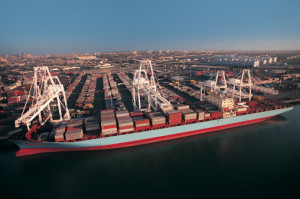
Robert A. Kagan’s research is a quest to understand legal authority and how it works in the world.
Like a botanist in the tropics, intrigued but overwhelmed by a profusion of flora, what Robert Kagan saw when he looked at law and society in the late 20th and early 21st Century was law growing everywhere-law pouring out of every institution, law seeping into the nooks and crannies of everyday life, law growing both in its reach and density. Kagan attributed this profusion of law to “the relentless pressures of technological change, geographic mobility, global economic competition, and environmental pollution,” which generate new inequalities, new injustices, new risks, and new cultural challenges to old norms. But what is the scholar to do when, as Kagan put it in one article, “there is too much law to study?”
What Kagan does, mostly, is to study law not in books or in courtrooms, but in the everyday world where it lives. Perhaps because of his pre-Ph.D. background as a business lawyer, Kagan often studies law in the world of commerce. From his dissertation, for which he was employed as a regulator implementing Richard Nixon’s wage and price freeze, to his latest work on pulp mills, diesel buses, and trucks, Kagan is truly a law in society scholar, investigating the life of the law in ordinary, sometimes banal places-fast food restaurants that enforce smoking rules, shipping ports that struggle with labor and environmental rules, and factories that must contend with OSHA inspections.
The settings and subjects of Kagan’s research are diverse, but each is part of a quest to understand legal authority and how it works in the world. In this quest Kagan is closely connected to Max Weber, the founder of sociolegal studies. Weber observed that systems of authority were changing: Rule by religious leaders, or by charismatic individuals, was being replaced by “rational-legal” authority. But what would legal authority look like in practice? Weber’s answer, for the most part, was that law would be bureaucratic, centralized and hierarchical. Weber was the prophet of bureaucratic rationalization, the movement of society towards predictable, calculable rules. The legal system’s job in such a society was merely to implement and apply commands created elsewhere, in the political system.
But of course much of American law does not look that way. It does much more than apply rules, and it is much more decentralized, more fluid, more unpredictable than Weber’s ideal type. This is the step from which Kagan’s work on “adversarial legalism” begins. What gives American law its open-ended character, Kagan observes, is that it is typically “party-centered” rather than hierarchical, meaning that instead of some legal authority, it is the parties to a dispute that drive American law. The parties can argue not just about how a rule of law applies to the facts of their case, but also over the purpose and justness of the rules themselves, as well as the justice of the process used to resolve the dispute. In adversarial legalism, then, everything is up for grabs.
American law and legal institutions, Kagan argues, were suffused with adversarial legalism, with powerfully mixed consequences. Adversarial legalism’s open-endedness makes it capable of great heroism, as when it used to reform barbarous prisons, stop police from torturing suspects, or recognize the ways in which sexual harassment abuses women. Litigant activism can be a powerful force, prying out the secrets of institutions that inflict asbestos, tobacco and pedophilic priests on society. Adversarial legalism made it possible for law to be, in the sociologists Philip Selznick and Philippe Nonet’s terms, “responsive,” that is, flexible and open to change in order to rectify social injustice. Further, Kagan argues that adversarial legalism is particularly attractive to American policymakers because, in a nation whose political institutions were designed to frustrate governmental activism, it gives them an alternative mechanism for addressing social problems. In an age of divided government and tight fiscal constraints, adversarial legalism appears to be government on the cheap, a way of building state capacity to resolve social problems without seeming to build the state. But Kagan was more struck by the flip side of adversarial legalism’s virtues: its costs, complexity, and unpredictability, features that result from its bottom up structure and endless opportunities for rule contestation. These downsides often create a system that works poorly both for would-be plaintiffs, who cannot afford to use it, and organizations, which struggle to manage uncertain legal threats.
Kagan came to his concept of adversarial legalism just as a cultural and political debate over “litigiousness” was ramping up. Did the U.S. have “too much” litigation? This is mostly a left-right debate, with conservatives supporting tort reform and seeking curbs on several types of litigation favored by liberals (civil rights and liberties, due process, environmental). Kagan’s position in this debate doesn’t correspond neatly to either side. He is with conservatives in worrying about the consequences for business of adversarial legalism, but his worries extend as well to the plaintiffs and their concerns-he is not anti-regulatory. Kagan’s comparative approach, and his evident appreciation for the social democracies of northern Europe, estranges him from today’s myopic and polarized policy debates over litigation and regulation.
Kagan’s focus has always been on good governance rather than academic theory building, and his engagement with public policy debates counts as one of his virtues as a social scientist. Sometimes though, the “pull of the policy audience” works against him, and we think this has been true with the concept of adversarial legalism. We worry that the term will be used, as Kagan himself sometimes seems to use it, simply as a kind of a shorthand for law’s pathologies, a disease with malign symptoms, rather than in the more Weberian sense, as a structure of authority with all kinds of political consequences, empowering some actors and disempowering others. Using the term this way helps us to better understand the causes and consequences of differences in legal style both across and within nations-to explain, for example, why Kagan is skeptical that European law will become “Americanized” or that affluent nations will converge in their legal styles.
Kagan is unusual among academics in that he works at both the macro and micro level, comfortable with making the big generalizations necessary for productive cross-national comparisons, but also with the more nuanced observations required for studies of the regulation of sites like ports and factories. Perhaps as a result, there is a tension in Kagan’s work between structure and process, or between the apparent tilt of the structures of authority and their actual consequences, as Kagan often discovered when he studied law in action. American criminal law gives defendants, in theory, all kinds of ways in which to contest their prosecution, yet an overwhelming percentage of defendants forgo their rights and take a deal instead. Tort and civil rights law in theory promise all kinds of opportunities for injured plaintiffs, but most of those aggrieved “lump it”. Adversarial legalism in theory offers too much law; in practice it often delivers too little. Where the pathological view of adversarial legalism says “too much,” the facts on the ground suggest a more complicated picture.
This is also true in the larger part of Kagan’s work, on regulation. Regulation, even in the United States, in structure looks more like Weber’s ideal type of “bureaucratic legalism,” with a hierarchical authority (OSHA, EPA, FDA) imposing rules and using the threat of punishment to elicit compliance. Kagan is part of a group of sociolegal scholars who have shown just how complicated the politics of regulation really are, and how little they correspond with this ideal type. Bureaucrats sometimes act like, well, like stereotypical bureaucrats, “going by the book,” as Kagan and Eugene Bardach found in their study of federal regulatory agencies, and the regulated sometimes respond as rational actors who worry only about the costs of punishment, but these are far from the only possibilities.
The limits of the rational actor model are apparent when, as Kagan often demonstrates in his research, organizations facing roughly the same threat of punishment react quite differently to a new law. A key variable in explaining regulatory response, Kagan and his co-authors argue, is the perceived costs of responding, as not all organizations enjoy the same “economic license” to follow new legal mandates. But the response to law is more than just a matter of weighing costs versus benefits. An organization’s “management style” can also have a significant impact on its response to regulations, with some organizations acting as laggards who ignore the law, while others act as true believers who go well beyond compliance. Kagan highlights the slew of actors and institutions that figure into response to law. It matters, for example, whether the officers within an organization who are charged with responding to regulations have internalized the norms of new laws, and this means that part of the politics of regulation is within the professions, where new norms are absorbed, translated, rejected and diffused. Communities surrounding organizations also play an important role. They can grant or deny what Kagan and his co-authors have called the “social license” of the company, its legitimacy, based on community beliefs about regulations and their associated norms. A company unmoved by the threat of punishment may still worry about the damage to its reputation when it is seen to violate norms about safety, the environment, and civil rights.
Political debates over “too much” or “too little” regulation, from this perspective, seem almost beside the point. For one thing, they center the action in government regulations. What Kagan and his colleagues have shown is that there is a much more complicated politics of norms in realms such as the environment, consumer protection, civil rights, and many others. Regulation is a field in which legal authority plays only a part. The corollary is that effective regulatory schemes have to go far beyond simply inducing compliance through fear of punishment. Policymakers must consider the wider, more complex politics of regulation Kagan and his comrades have illustrated.
As law continues to expand its reach both in the United States and abroad, we believe that more scholars will be drawn to the questions Kagan has posed and the concepts he has developed in his research. Kagan’s distinctions between forms of legal authority give us a lens to view structural differences across countries and policies areas, organizing the unwieldy landscape of modern law. And his insistence that structures are just the beginning of the story, that the “rule of law” is much more flexible and more circulatory than Weber’s ideal type would suggest, pushes us to look beyond the abstract, and account for how law actually happens in the world. The result is a deeper understanding of the consequences, both heartening and disturbing, of the relentless march of law in contemporary society, and what we might want to do about it.
The essay is part of a five-part series, Honoring Robert A. Kagan.





